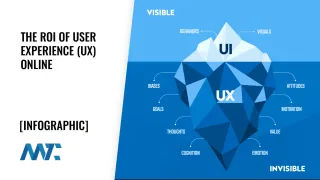We’re assisting a SaaS company in optimizing their platform for organic search (SEO)… and when we reviewed the code for their output templates, we immediately noticed that they never incorporated HTML5 methods for their page outputs.
HTML5 was a significant leap forward for user experience (UX) in web development. It introduced several new methods and tags that enhanced the capabilities of web pages. Here’s a bulleted list of ten key HTML5 methods and tags with explanations and code samples:
- Semantic Elements: HTML5 introduced semantic elements that provide a more meaningful structure to web content, improving accessibility and SEO.
<header>
<h1>Website Title</h1>
</header>
<nav>
<ul>
<li><a href="#">Home</a></li>
<li><a href="#">About</a></li>
<li><a href="#">Contact</a></li>
</ul>
</nav>
<article>
<h2>Article Title</h2>
<p>Article content goes here...</p>
</article>
<footer>
<p>© 2023 WebsiteName</p>
</footer>- Video and Audio: HTML5 introduced
<video>and<audio>elements, making it easier to embed multimedia content without relying on third-party plugins.
<video controls>
<source src="video.mp4" type="video/mp4">
Your browser does not support the video tag.
</video>
<audio controls>
<source src="audio.mp3" type="audio/mpeg">
Your browser does not support the audio tag.
</audio>- Canvas: The
<canvas>element allows for dynamic graphics and animations through JavaScript, enhancing interactive features.
<canvas id="myCanvas" width="400" height="200"></canvas>
<script>
const canvas = document.getElementById('myCanvas');
const context = canvas.getContext('2d');
// Draw shapes and animations here using JavaScript.
</script>- Form Enhancements: HTML5 added new input types (e.g., email, URL) and attributes (e.g.,
required,pattern) for improved form validation and user experience.
<form>
<label for="email">Email:</label>
<input type="email" id="email" name="email" required pattern="[a-z0-9._%+-]+@[a-z0-9.-]+\.[a-z]{2,}$">
<input type="submit" value="Submit">
</form>- Geolocation: HTML5 enables websites to access the user’s geographic location, opening up possibilities for location-based services.
if ('geolocation' in navigator) {
navigator.geolocation.getCurrentPosition(function(position) {
const latitude = position.coords.latitude;
const longitude = position.coords.longitude;
// Use latitude and longitude data here.
});
}- Local Storage: HTML5 introduced
localStoragefor client-side storage, enabling websites to store data locally without relying on cookies.
// Storing data in local storage
localStorage.setItem('username', 'JohnDoe');
// Retrieving data from local storage
const username = localStorage.getItem('username');- Web Storage: Alongside
localStorage, HTML5 introducedsessionStoragefor storing session-specific data, which is cleared when the session ends.
// Storing session-specific data
sessionStorage.setItem('theme', 'dark');
// Retrieving session-specific data
const theme = sessionStorage.getItem('theme');- Drag and Drop: HTML5 provides native support for drag-and-drop interactions, making it easier to implement intuitive interfaces.
<div id="dragTarget" draggable="true">Drag me!</div>
<div id="dropTarget">Drop here!</div>
<script>
const dragTarget = document.getElementById('dragTarget');
const dropTarget = document.getElementById('dropTarget');
dragTarget.addEventListener('dragstart', function(event) {
event.dataTransfer.setData('text', 'Dragged item');
});
dropTarget.addEventListener('dragover', function(event) {
event.preventDefault();
});
dropTarget.addEventListener('drop', function(event) {
event.preventDefault();
const data = event.dataTransfer.getData('text');
// Handle the dropped item here.
});
</script>- Responsive Images: HTML5 introduced the
<picture>element and thesrcsetattribute for delivering appropriate images based on screen size and resolution.
<picture>
<source1.webp" media="(min-width: 1200px)">
<source1.webp" media="(min-width: 768px)">
<img src="image-small.jpg" alt="Responsive Image">
</picture>- Details and Summary: The
<details>and<summary>elements allow you to create expandable sections of content, enhancing document organization.
<details>
<summary>Click to expand</summary>
<p>Additional content goes here...</p>
</details>These additional HTML5 features further improved the capabilities of web development, providing developers with tools to create more interactive and user-friendly websites.
